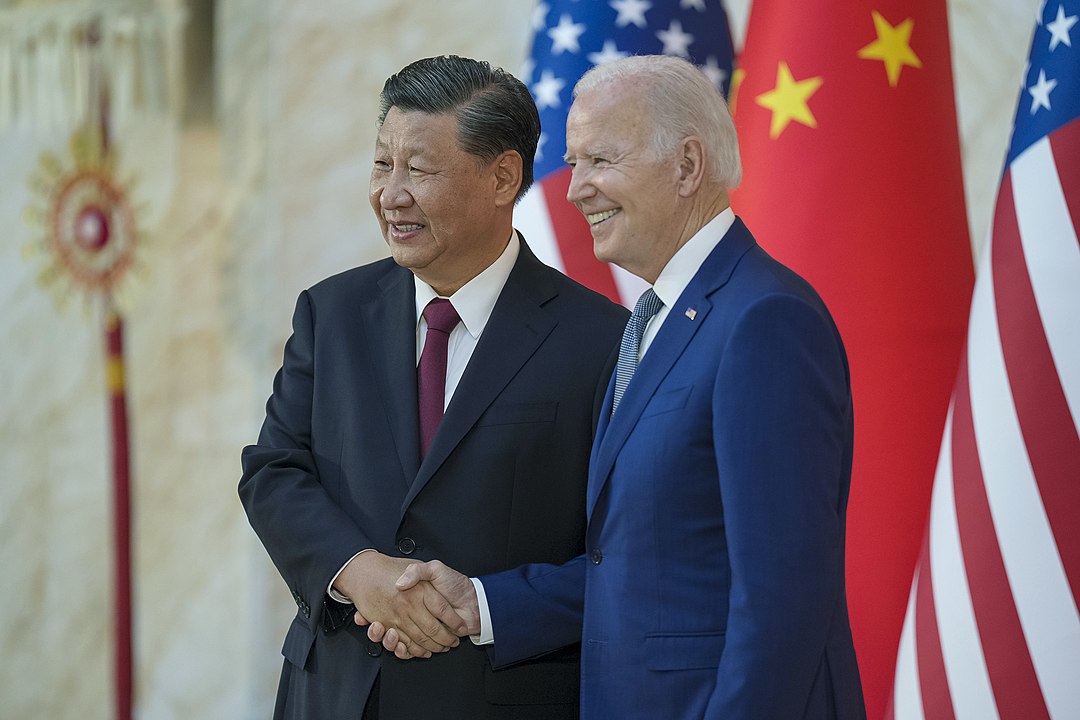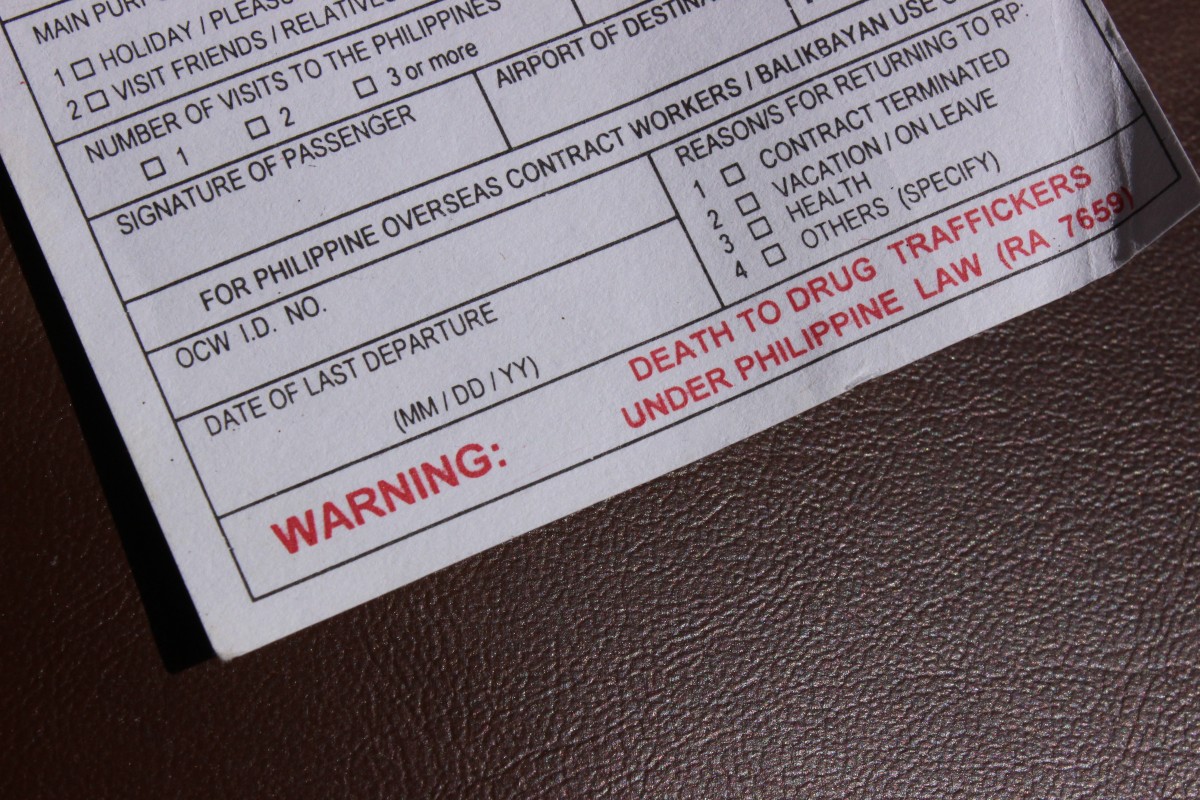When U.S. Secretary of State Antony Blinken visited China in June, many hoped his meeting with President Xi Jinping would help defuse escalating tensions between the two countries.
Things got off to a strange start, however, when Blinken wasn’t given the red carpet treatment, a traditional show of respect, but rather steered down “red lines on the runway” upon his Beijing arrival.
They discussed, among other topics, fentanyl precursors, which the US accuses China of shipping to Mexico, where cartels turn it into finished fentanyl to be sold in America. China counters that the US has done almost nothing to curb its demand for deadly opioids. (Both are correct.)
Not long ago, China helped the US apprehend drug traffickers, but following Trump’s blaming China for covid and Nancy Pelosi’s visit to Taiwan, they stopped collaborating with us on international drug enforcement. Which means that when the US indicts Chinese nationals like my friend Ye Chuan Fa, there’s basically no chance he’ll be arrested.
Blinken, however, was there to mend fences. One concession he likely offered was easing sanctions on China’s Institute of Forensic Science, part of the Orwellian-named Ministry of Justice, which the US believes engages in abuses against the Uyghur population.
Blinken’s efforts appear to have paid off. He told reporters that “the Chinese side agreed to set up a joint working group on narcotics.” This may not sound like much, but it’s a retreat from overt hostility.
The problem was that, immediately after Blinken returned home, the US Justice Department announced criminal charges against four Chinese chemical companies and eight individuals allegedly trafficking fentanyl precursors.
Predictably, this pissed China off. “China urges the U.S. side to stop dumping blame and to stop smear attacks on China,” said China’s foreign ministry.
So, what happens now? US senators from both sides of the aisle are promising to sanction China anew.
“We can increase tariffs and extract a massive economic cost. I think the Biden administration should be doing exactly that,” said Ohio senator J.D. Vance.*
*I also wrote a book about economic despair. Does that mean I also get to be a senator?
“We’ve got to go after all sources that are financing this and that are laundering these drugs,” added Sherrod Brown, Ohio’s other senator.*
*How do you launder drugs?
You may be wondering: Will this work?
Of course not. Fentanyl precursors are easy to make, and no one makes them more cheaply than China. Which means that even if we could somehow block these companies’ abilities to transact, new companies would just take their places immediately.
China has hundreds of thousands of chemical and pharmaceutical concerns, and many operate on the “gray market,” producing chemicals like fentanyl precursors that are banned in the West, but completely legal in China.*
*Yes, some black market Chinese labs sell pure, finished fentanyl, but Americans are much more likely to consume fentanyl that was finished in Mexico.
Further, most of these Chinese gray market companies accept Bitcoin and other cryptocurrencies. Do you really think the US Treasury Department is dynamic enough to snipe these companies off one by one and smother the market? Not a chance.
The main problem, however, is that going after fentanyl precursors is a misguided strategy to begin with. As I’ve written, stopping drugs from getting into this country (or any country) is impossible, and we should cease spending tens of billions every year trying.
Further — and I don’t think people realize this — fentanyl precursors are not particularly profitable for China.
Sure, the fentanyl trade is worth billions annually, but the Mexican cartels see most of that money.
Just do the math. Check out this online drug emporium, which lists a dozen or so Chinese chemical companies selling a popular fentanyl precursor called 4,4-Piperidinediol.*
*Crazy that it’s right there on the clear web, no?
Their prices vary, but for the sake of easy math let’s assume a price of $1000 per kilogram. One kilogram of precursor produces about 2.4 kilograms of fentanyl, or 2.4 million milligrams.
Let’s then say that each dose of fentanyl — to be sold on the street — is 2 milligrams. That means that, from our original kilogram of precursor, we now have 1.2 million doses of fentanyl.
Each of those doses will be adulterated, and the prices marked up by the cartels. Then they’ll be further adulterated and further marked up by regional distributors, and then again by street dealers. Ultimately, those original 1.2 million pure doses of fentanyl might become 12 million adulterated doses, sold to users at perhaps $7 each. That adds up to gross revenues of $84 million, from that one kilo of fentanyl precursor.
Holy cow, that’s a lot of money. But the Chinese chemical company doesn’t see any of that! All they get is their original $1000.
Not only that, but these companies aren’t selling very many kilograms.
Since fentanyl is killing more Americans than any drug in history, we imagine it’s pouring into the country. But really it’s more like a trickle. Because it’s so powerful, not much needs to be sent, at least compared to other drugs like heroin, meth, and cocaine.
Again, let’s do the math: Customs and Border Patrol seized 50,000 pounds of fentanyl last year. Of course, that’s only a small fraction of what was actually sent across the border; the DEA estimates we intercept 10 percent. So let’s say 500,000 pounds came across.
But that’s not pure fentanyl, that’s highly-adulterated fentanyl. Let’s estimate it’s 10 percent pure.*
*It’s usually much less pure than that, but I do not believe we actually intercept anywhere near 10 percent of the drugs coming in either. So let’s call it a wash.
That puts us, then, at about 50,000 pounds of pure fentanyl entering the US every year. That might sound like a lot, but I’ll bet it could all fit in your two car garage, with enough room off to the side for your electric-powered lawnmower.
For the Chinese companies to make 50,000 pounds of pure fentanyl, then, requires perhaps 20,800 pounds of precursors. That’s about 9,400 kilos.
Multiplying that by the $1000 per kilo these companies charge gives us….drumroll please…the total estimated gross annual fentanyl precursor US profits of the Chinese chemical companies:
$9.4 million.
And that’s not for one Chinese chemical company, that’s for the entire industry, which I’m guessing puts it behind the industry making knock-off Slinkys.
So why all this hullabaloo about precursors? Because, for one thing, the fentanyl issue is in part a proxy for other issues the US and China are fighting about, including semiconductors, tariffs, the Uyghurs, the South China Sea, the spy balloon, and God knows what else.
When US politicians try to appeal to voters, it’s easier to demonize China for killing our citizens with drugs, for example, than for persecuting minorities within their own borders.
But if we really care about disrupting drug trafficking, we need to focus on the real issue: Money laundering. My theory is that the fentanyl precursors are just a loss leader for Chinese money laundering, a growth industry that does produce billions in annual profits.
In recent years China has come to dominate this industry, washing the Mexican cartels’ drug cash, and helping rich Chinese people get their money out of China. High-level officials are believed to have their hands dirty.
I will discuss this issue more in the future. In the meantime, stay safe out there, and please let me know your thoughts on my math.
*Thanks to chemist Michael Finizio for noting that 1 kilogram of precursor produces about 2.4 kilograms of fentanyl, which informed my final calculations.
This article was originally posted in Ben Westhoff’s newsletter here, with his permission.


